How to Visit Përmet
Take a walk back in time with a visit to one of Albania's most unique towns
One of my favorite places in Albania is Përmet, a small, picturesque town in the south of the country nestled among snow-capped mountains. Visiting the small city is like taking a walk back in time.
The town itself might not seem like much; it’s got a main square and a smattering of houses clustered around it. Walking past its dystopian, neon-color-painted communist-style buildings with their garish hues of teal and yellow and pink makes you think you are back under Enver Hoxha’s rule.
But the surroundings offer incredible hikes, lost villages, beautiful bridges and unique natural escapes that will help you hit the reset button. And the town itself is home to some delicious, unique cuisine.
Përmet’s main claim to fame is its hot springs, located about a twenty-minute drive away from the town, at the entrance to the Langorice Canyon. These hot baths are sought out by tourists and Albanians alike for their much-touted medicinal benefits. Besides treating psoriasis and acne, the ever-warm waters are relaxing and help soften rough, dry skin.
And since the sulfurous springs are warm year-round, they make for a refreshing stop in the winter for anyone who wants to spend an afternoon gazing at snow-capped Alps in their swimsuits. There’s one major pool that most visitors take a dip in; don’t be surprised if during your stay a herd of goats comes out of the bordering forest and starts nipping at your belongings! They pilfered all of the food out of my bag last time I was there.
Smaller pools underneath the awesome five-hundred year old Ottoman-era arched stone bridge opposite the main pool offer additional respite for those looking to get away from the crowd, as do other pools further up the canyon. The Ottomans invaded Albania from its southern tip up through the central areas, penetrating but never quite fully controlling the North due to its highly-mountainous nature, which made its conquest quite difficult (the Mirdita region, for example, always remained completely autonomous). For this reason the North has remained more Christian while the rest of the country leans Muslim.
If you come wearing water shoes you can hike directly up the canyon and explore it from the river itself. But my recommendation is to take the road that goes behind the pools and into the mountains behind them to get a bird’s eye view of the canyon. You’ll cross smaller yet equally charming Turkish bridges connecting one gorge to the next. At sunset the oranges, reds and grays of the clay walls of the canyon melt into each other in a beautiful fusion of color. The intense blue of the lime-infused water gives the river a dreamy, other-worldly hue, providing sharp contrast with the lush greenery that grows out of the sides of the canyon and along the riverbanks.
The town of Përmet itself sits above the Vjosa River, the last wild river in Europe. The Vjosa - also an electric tinge of blue - has been made famous by Leonardo di Caprio, who led an international effort to stop Albanian industry from building dams along the river banks. Due to the campaigning, the river has been kept pristine and running freely. A solemn walk along its banks is another pleasant way to enjoy the sun setting over the town.
But do that only after climbing Guri i Qytetit, the Town Stone, a massive boulder overlooking the river and town which has come to be known as a symbol of the city itself. You can snap a beautiful photo next to the blazing Albanian flag atop the rock for a perfect souvenir to remind you of the cozy town and its environs.
And, fun fact - a legend told by locals tells that there used to be a castle built atop the rock. When the invading Turks came, only the ruler’s daughter, Diestra, remained with her infant son held to her breast. Rather than surrender herself to the invaders, the Albanian princess - yes, you guessed it - threw herself off the Guri i Qytetit, likely to her death, landing on a smooth stone at the base of the boulder; a marking on the stone is allegedly the spot where her son’s cradle shattered upon impact.
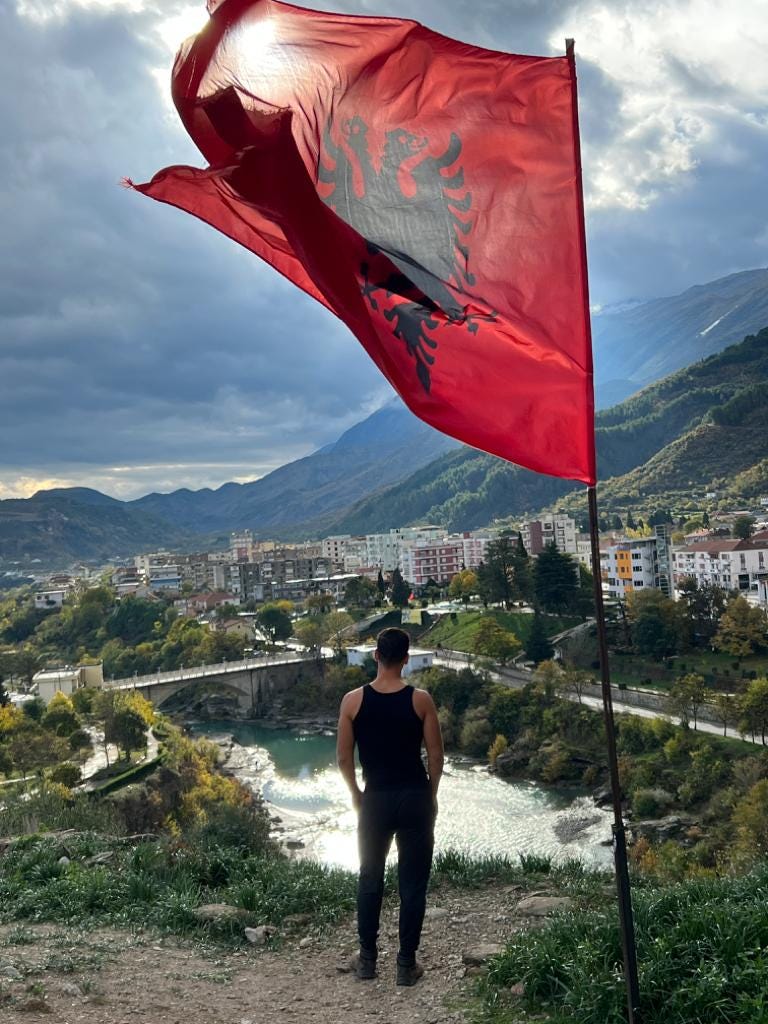
Yet another tale of an Albanian woman sacrificing herself in pursuit of a higher ideal.
For hikers, any visit to Përmet is incomplete without a stop at the abandoned villages that lie just above the town in the mountains. Leusë, a nearly-deserted village, is home to a stunning Orthodox church with its own courtyard still intact, in use since the 1700s. Walking inside the church gives you the feeling that you are on another planet: the oil paintings on the walls are still visible and are being actively renovated, offering scenes from the New Testament replete with angels, demons and levitating monks that have withstood the passage of the centuries.
Visitors will enjoy walking up the steep, stone-laden pathways of the verdant village built into the side of the mountain. You can still observe the remaining citizens of the small town who continue to live traditional village lives tending to their cows and donkeys along with farming. The villagers, long isolated from the broader world, are likely to stop and stare openly while you walk by. Chickens and dogs roam the winding passages of the town as easily as their owners.
Going up the mountain trail you can hike to Lëshice and Lipë. Lipë e Vjetër is an abandoned village whose ruins you can walk through; one old noble house in particular has a huge tree growing out of it with incredible views over the valley below. The large houses and plots of land paint a picture of a village which used to be very prosperous. These days it’s entirely abandoned and its new iteration, Lipë e Re further down the mountain, has a few families who make a living chopping lumber and tending farmland closer to Përmet.
After a full day of hiking you’ll want to head to Restaurant Familjar close to the center of town. A little pricier than its competition, the restaurant is well worth the few extra hundred Leke you’ll spend on delicious baked spinach made with melted cheese, airy, gourmet-style meatballs (qofte shtepie) and the house salad, prepared with a proprietary sauce, peanuts and freshly-picked vegetables. The house wine (a red Merlot) and the walnut gliko, a candied fruit preserve indigenous to Përmet and Gjirokastër, is an excellent way to finish off the meal before heading home.
Përmet is one of Albania’s unique gems. It takes you back in time and provides an eclectic mix of history, hiking and bathing-year-round you can’t quite find anywhere else in the country. I highly recommend checking it out, especially these days, as it does get quite packed with tourists in the summer months.





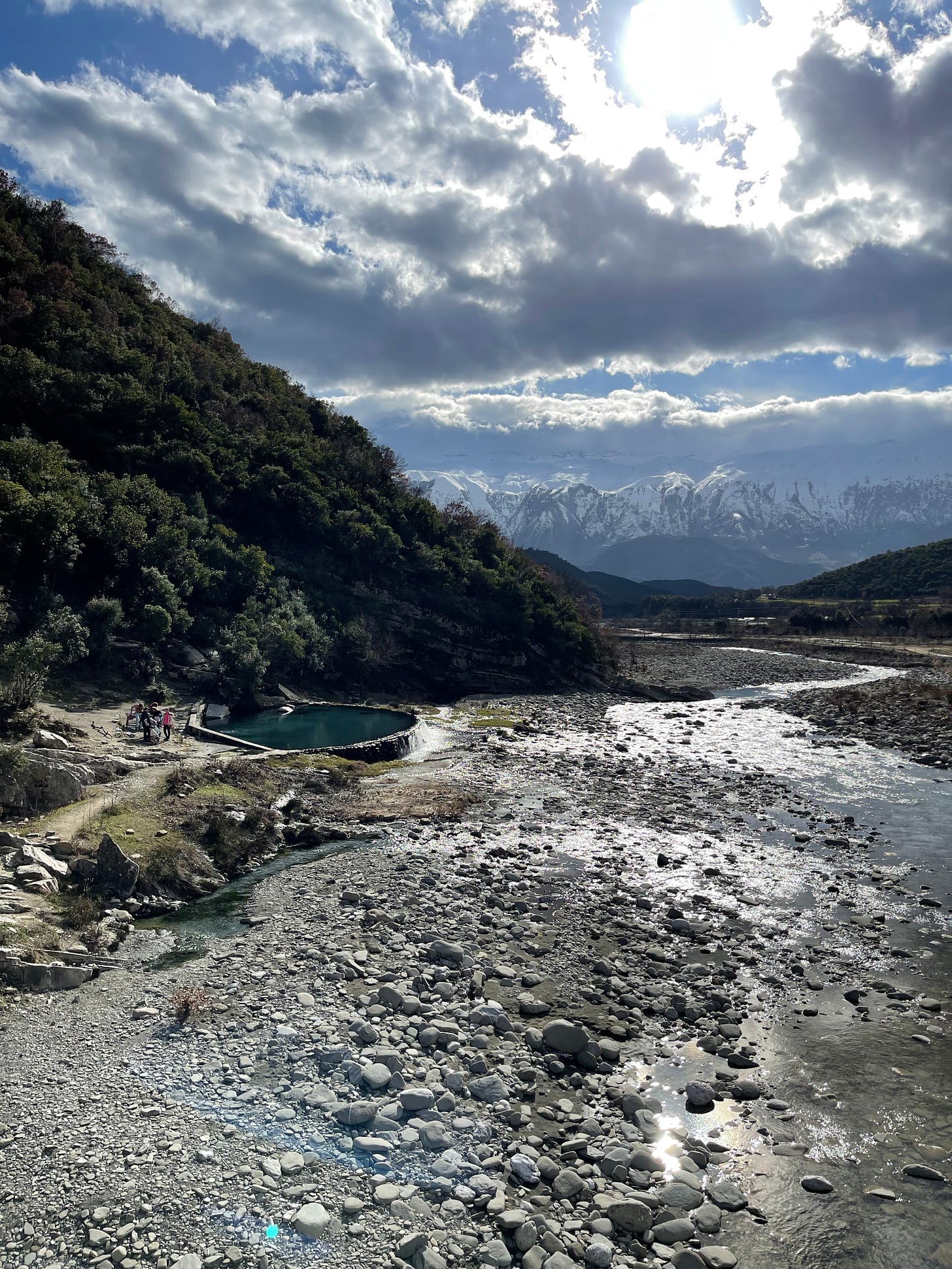


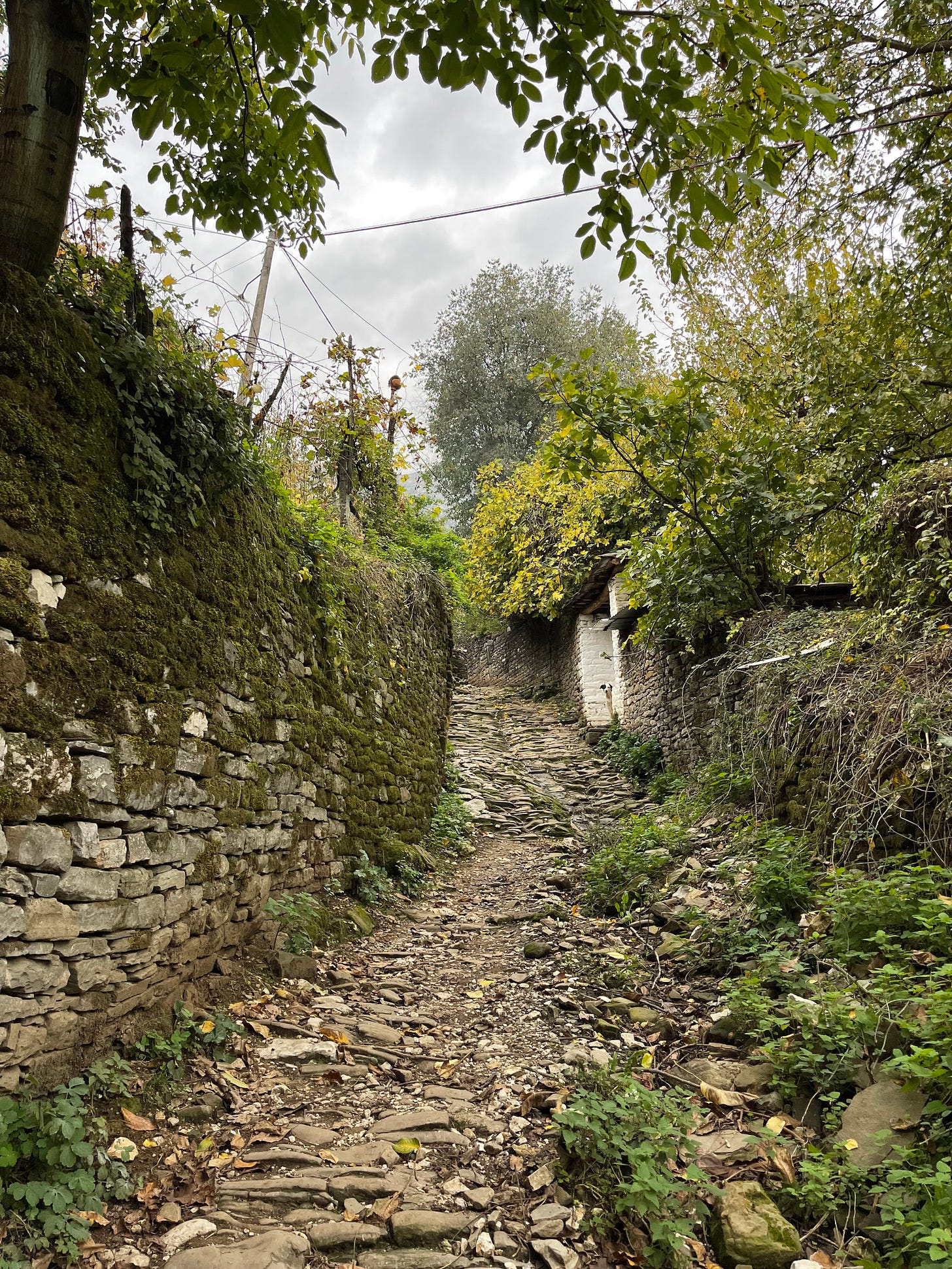
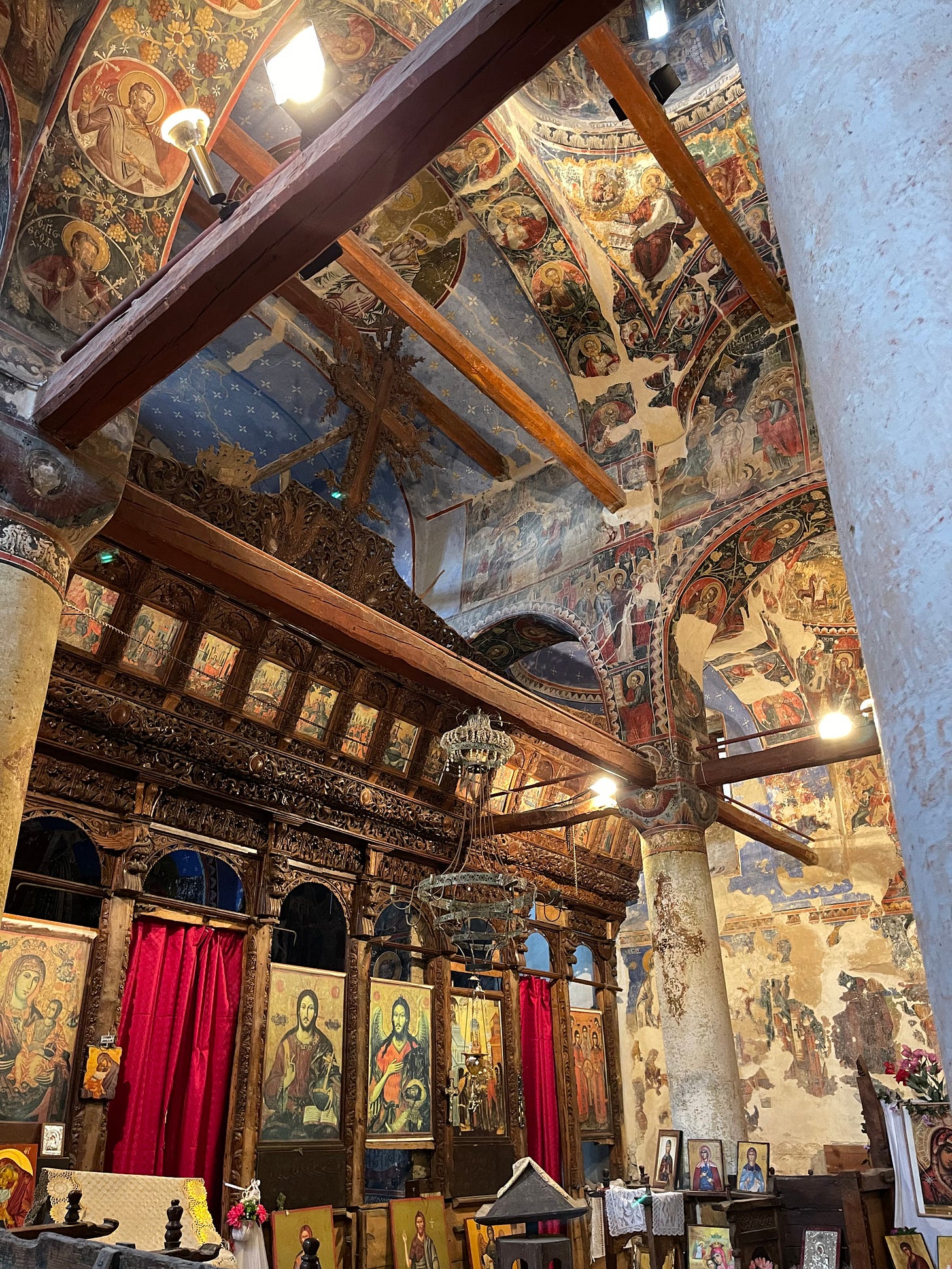
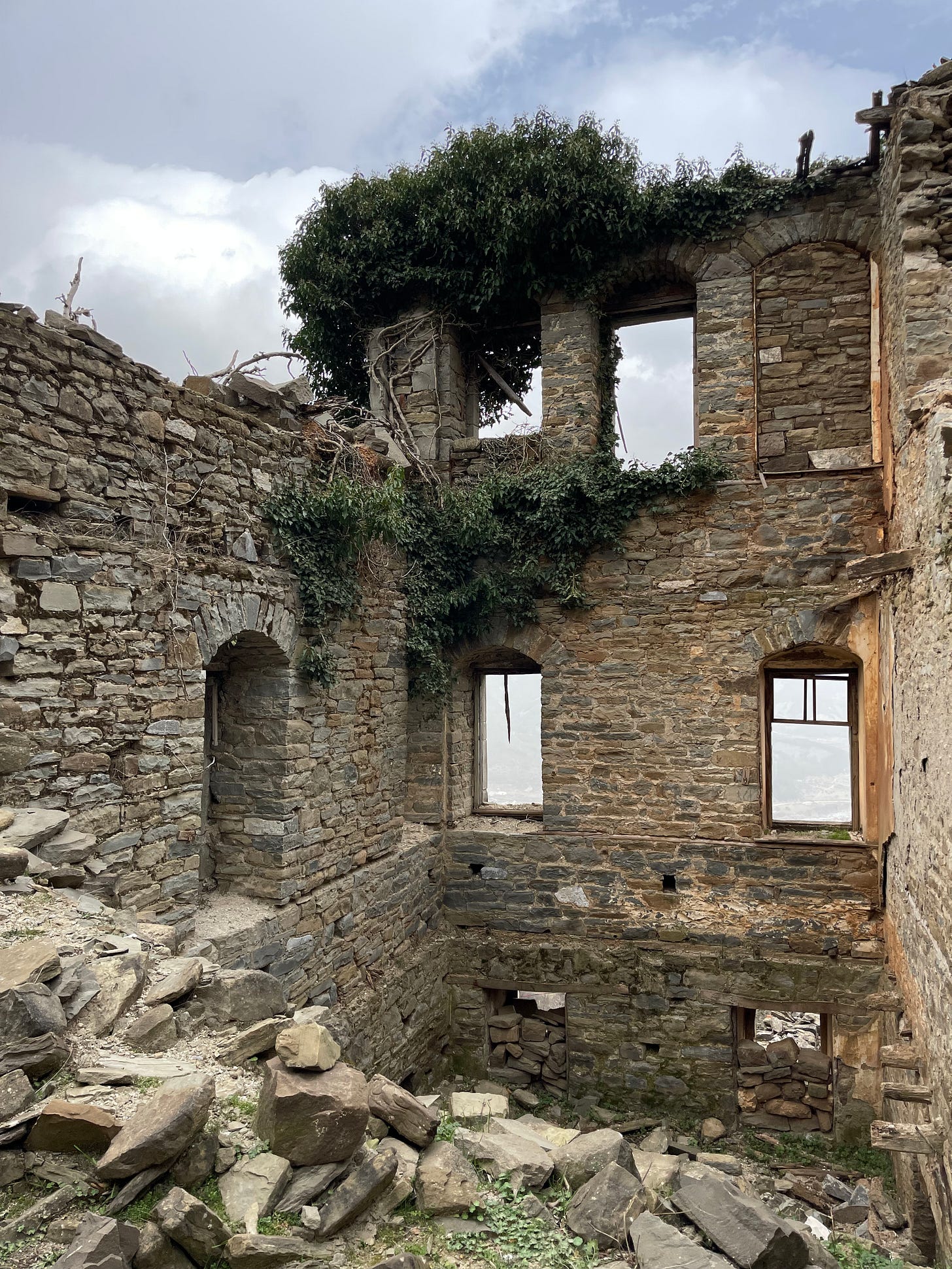
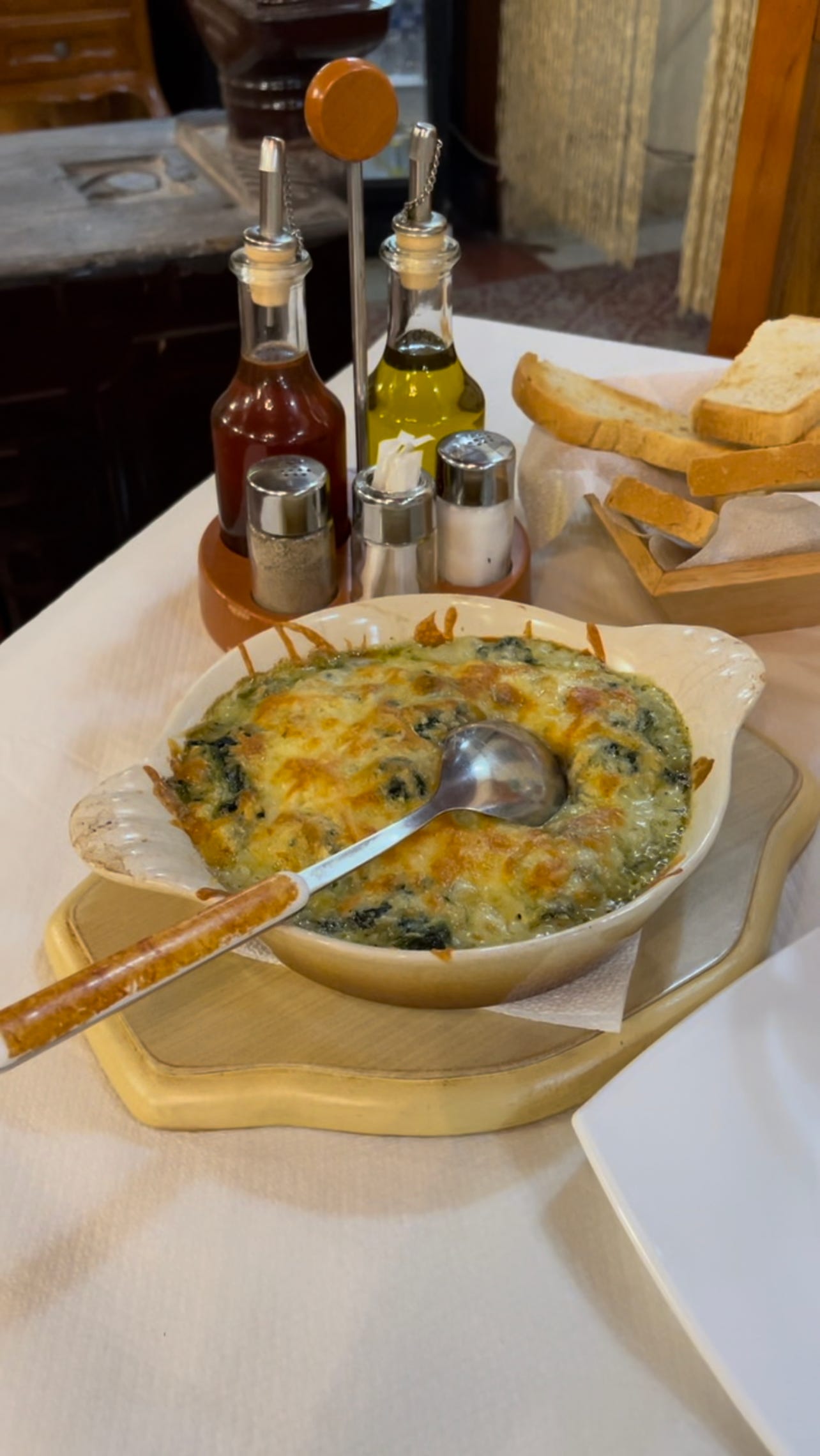
We really enjoyed our time in Permet and the beautiful surrounding area. I had a lovely swim in the hot springs.